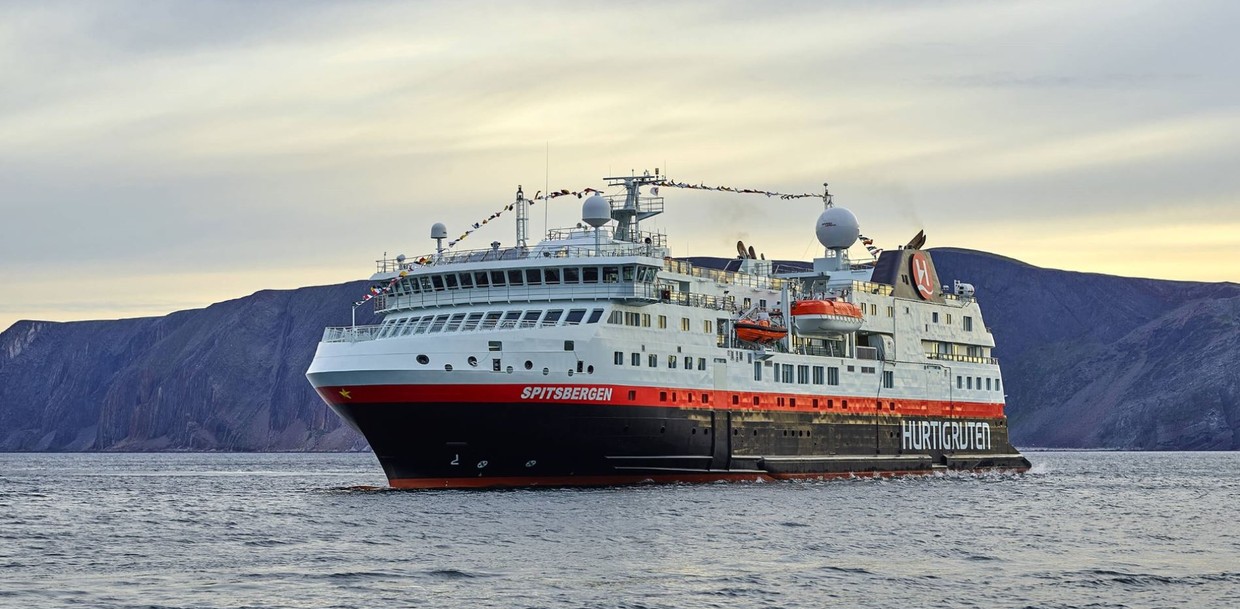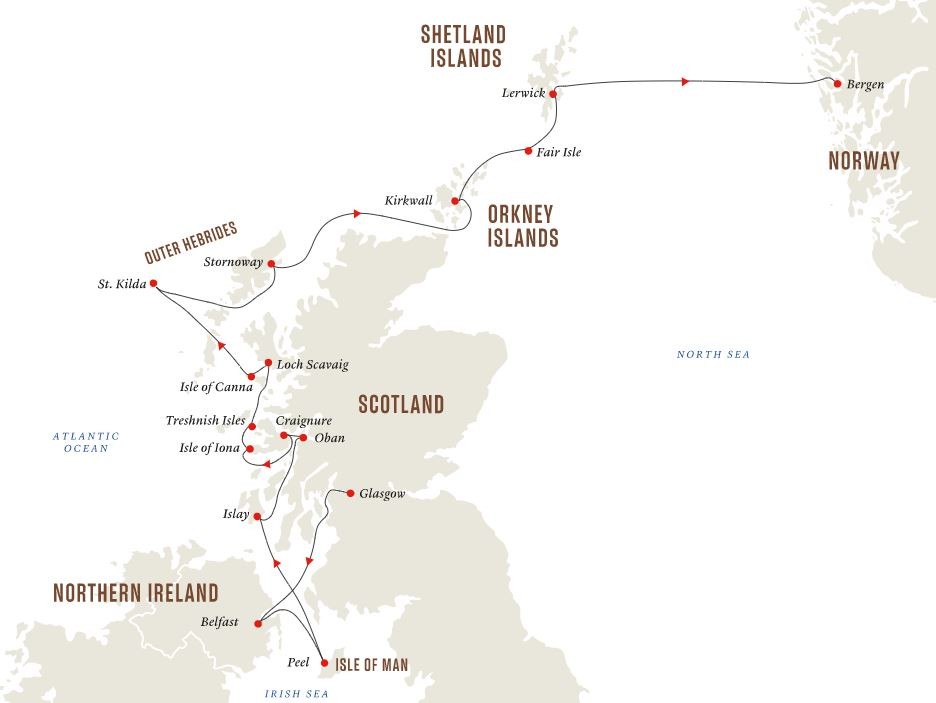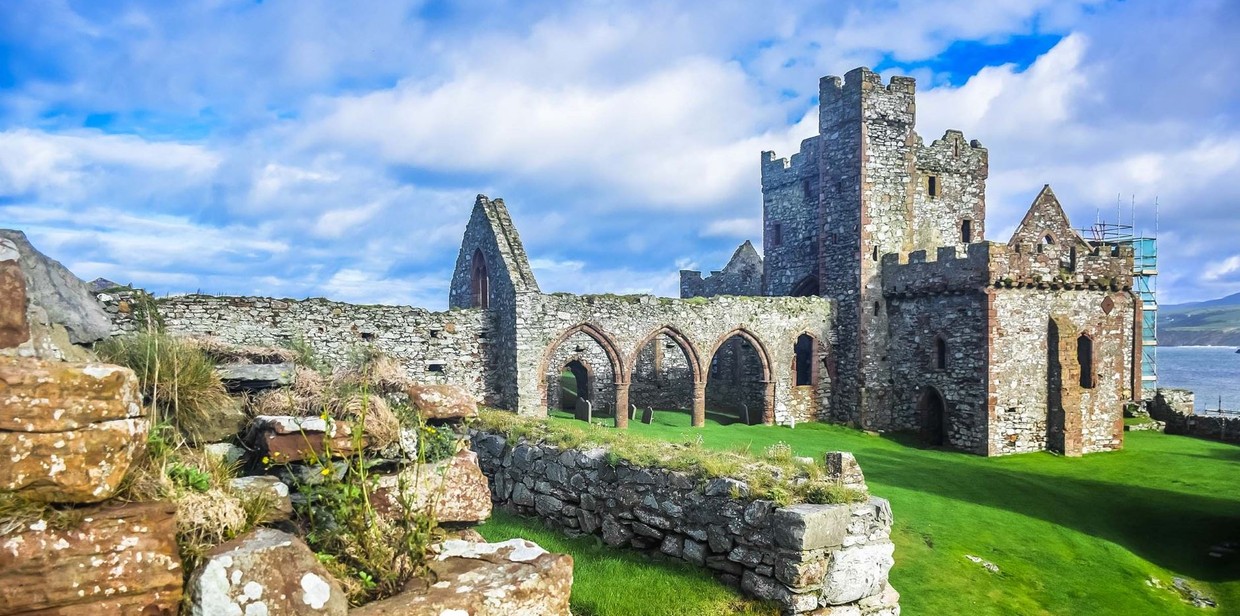from$ 5085 AUD
Note: Current p/p indicative rate. Final price may change due to currency fluctuations.
Spitsbergen
Glasgow to Bergen
Overview
Island adventures Join MS Spitsbergen on a glorious expedition cruise from Scotland to Belfast and the Isle of Man. Follow the whisky trail in Islay, which is just as intoxicating as its peaty drams. From here, you'll explore the beautiful Outer Hebrides, Viking-influenced Orkneys and remote Shetland Islands, before sailing to Bergen. Wonderful wildlife You'll be transfixed by the rugged natural beauty of the Treshnish Isles, Iona, Skye, Fair Isle and UNESCO-listed St Kilda. Enjoy looking out for rare bird colonies, eagles, seals, and perhaps even whales. PLEASE NOTE: In keeping with our adventurous spirit, we visit small remote ports on our expeditions. Due to sea conditions and secluded locations we visit, it's not always possible to dock in port. Sometimes we have to use our small expedition Rib boats to get ashore.
Departures
Cruise Itinerary
Our voyage starts in Glasgow. Meaning ‘Dear Green Place’ in Gaelic, Glasgow boasts over 90 parks and gardens. Famous for its Victorian as well as art nouveau architecture, it is home to such institutions as the Scottish Ballet, Opera and National Theatre. This is definitely a city you’ll want to explore more before you board MS Spitsbergen.
A city of industry and elegance, Belfast is the birthplace of the Titanic, as well as being the capital and largest city of Northern Ireland. It is a gateway to a glorious countryside of pretty villages and a beautiful rugged coast with pristine beaches and breathtaking clifftop walks. Experience Giants Causeway, hike through spectacular scenery or explore what this impressive city has to offer.
A seaside town, the pretty port of Peel was the 14th century capital of the island and seat to the King of Mann. Winding lanes of merchants’ houses, bear witness to the 19th century fishing schooners built here which traded from Ireland to Shetland. Peel Castle, connected by causeway and reputedly built by Magnus Barelegs, King of Norway, dates from the 11th century. Museums in town display vintage bikes and cars; a connection to the more modern high-speed racing that occurs on the island.
Once the seat of the MacDonalds, Lords of the Isles, this is ‘whisky island’, world renowned for its peaty single-malt whiskies and many distilleries. As a stop-off for wintering geese and migrating birds, there is good bird spotting. In the charming little town of Bowmore, there are a handful of small shops, an interesting round church, plus superb cliff-top walks and a well-known golf course.
Known as the ‘Gateway to the Isles’, the little town of Oban reached its heyday when the railway arrived, adding to its life as a busy fishing port. Now a popular holiday spot, the Victorian buildings cluster round the port, ferries come and go, heading out to the distant Hebrides. Many cafés have seafood-focused menus, and the distillery provides tours to sample a local dram of whisky. This evening we visit the Isle of Mull where we are fortunate to have a private guided visit to the dramatic 800-year-old Duart Castle, one of very few castles remaining in the ownership of the family. We will be hosted by Sir Lachlan MacLean, the Clan Chief himself. The Castle houses much MacLean memorabilia and our visit will include the kitchen, Sea Room and Edwardian bedrooms as well as a private reception in the Banqueting Hall. The Castle is very much the type of building you would expect a Highland Chief to live in; it is simply furnished, austere and has an air of no-nonsense solidity and age.
World famous for its religious connections, Iona was settled in 563AD by the Irish missionary, St Colomba. The much-restored Abbey remains a place of pilgrimage and peace. Wide views from the beach, known as ‘The Bay at the Back of the Ocean’ stretch west towards the Outer Hebrides. We will explore the Treshnish Isles, a group of distinctive volcanic islands which are home to a wealth of wildlife, from nesting puffins to colonies of kittiwakes, razorbills, guillemots and Atlantic grey seals. Fingal’s Cave, immortalised by Mendelssohn’s glorious ‘Hebrides Overture’, is on the cave-riddled island of Staffa. The basalt columns here are a northern extension of the Giant’s Causeway. Discovered by the Vikings and also in 1772 by Sir Joseph Banks, viewed by Queen Victoria, Sir Walter Scott and Samuel Johnson, this is one of Scotland’s most famous islands. It is best viewed from the sea where the colour of the waters within the cave and its rising columns are at their most impressive.
Surrounded by the high peaks of the Skye Cullins, Loch Scavaig leads to one of the most romantic and dramatic lochs in Scotland – freshwater Loch Coruisk. Painted by Turner and a popular destination for the Victorians, this is a powerful landscape promising great hiking and kayaking. We head to the Isle of Canna, which is the most sheltered of the Small Isles, known as ‘the Garden of the Hebrides’. Linked by causeway to the island Sanday with its puffin colonies, Canna is green and grassy and has delightful flora and butterflies. Once privately owned by Sir John Lorne Campbell, the island is now the property of The National Trust for Scotland.
Any visit to this distant and wild archipelago, with its breathtaking sea cliffs, is totally weather-dependent. As a UNESCO double World Heritage Site and the ‘jewel in the crown’ of the National Trust for Scotland, it is an unforgettable experience. The outlying stacs and islands, which are the remains of a volcanic crater, provide ledges for thousands of nesting seabirds. Minke whales are frequently seen around the swirling waters of the archipelago. Once home to Britain’s most remote island community, it was evacuated in 1930 at their own request after 5,000 years of continuous habitation. The tiny museum that remains is a record of how hard life was on this exposed island.
Originally a Viking settlement, Stornoway is the main town of the Western Isles and the capital of the Isle of Lewis, which is the largest and most northerly of the Outer Hebrides. A bustling harbour and waterfront with museums and art galleries are overlooked by the handsome Lews Castle which we invite you to explore with us. Further afield are mills and cottages where hard-wearing Harris Tweed is woven. There are tiny folk museums, the world-famous Callanish Standing Stones, and the mysterious Carloway Broch - the best-preserved fort in Scotland dating back more than 2,000 years.
Kirkwall is the largest town and the capital of the Orkney archipelago. The first mention of a settlement here is in a saga from 1046, and the name Kirkwall derives from the Norse `Kirkjuvagr´ (Church Bay). Today, Kirkwall has a population of 8,500, and is one of the most attractive and well-preserved small towns in Scotland. The community is dominated by the famous St. Magnus Cathedral. A local saga tells the story of how Magnus, kidnaped from the islands, refused to fight with the Vikings or condone their violence. Magnus eventually returned home, only to be put to death for his pacifism, and the church was named in his memory.
Lonely Fair Isle with its high red-sandstone cliffs and gentle rolling fields is a vital stop for migrating birds and has had a permanent Bird Observatory since 1948. Synonymous with unique geometric knitwear possibly of Spanish or Scandinavian origin, the island also boasts a mini ‘Lighthouse Keepers’ golf course and a friendly, self-sufficient population.
Lerwick is the main port of the Shetland Islands and by far the northernmost town of Scotland. Founded in the 17th century as a fishing port, today Lerwick is a bustling, cosmopolitan town. The old waterfront is still active with visiting yachts and working fishing boats. The area boasts some of Shetland's most attractive scenery and an extraordinary concentration of archaeological sites, including two remarkable Iron Age villages.
We bid farewell after a voyage of discovery. Before heading home, wisit the fish market and stroll through Bergen´s historic harbour area, fronted by wooden houses dating back as far as the 1300s. You can also take a trip up to nearby Mount Fløyen via funicular tram for views over the city and surrounding mountains.
Hurtigruten offers unique expedition cruises to some of the most remote and pristine waters of the world. As with all expeditions; nature prevails. Weather, and ice and sea conditions, sets the final framework for all Hurtigruten’s operations. Safety and unparalleled guest experiences are at all times our top priorities. All our indicative itineraries are continuously evaluated for adaptions, whether this is due to constraints the elements unexpectedly presents – or exciting possibilities nature and wildlife offer. That is why we call it an expedition.
Spitsbergen

Vessel Type: Expedition Length: 100 metres Passenger Capacity: 335 Built / refurbished: 2009 / 2016 MS Spitsbergen is named after the crown jewel of Arctic Norway – the Svalbard archipelago and its biggest island, Spitsbergen. After complete reconstruction, MS Spitsbergen joined the Hurtigruten fleet in 2016. The ship features high technical standards as well as comfortable, modern public areas and cabins. The vessel's fresh Scandinavian design reflects a colour palette derived from the sea. She is modern and environmentally progressive, and we plan further improvements that will reduce emissions and fuel consumption even more. The new ship’s maneuverability and optimal size make her quite suitable for exploring polar waters. Expedition team on board MS Spitsbergen has its own on-board Expedition Team and serves as a university at sea. Interesting lectures inside the ship as well as out on the sun deck make this an exciting and educational journey. Topics depend on the season and the waters we sail in. The Expedition Team host a lecture programme and evening gatherings daily. Out on deck you can participate in live points of interest to learn more about the nature, culture and other phenomena we encounter along the coast. In addition, the Expedition Team will introduce you to the uniquely Norwegian notion of `friluftsliv´ (outdoor life), and encourage you take part in `friluftsliv´ hikes and activities during the journey. Our dedicated Expedition Teams have one mission: to enhance your experience by engaging you and interpreting the nature, wildlife, and culture you encounter during the voyage. Read more about our Expedition Teams here. Ship facilities Expedition Team - Explorer bar - Panoramic lounge – Explorer lounge - Compass Service Centre - Brygga bistro - Shop - Torget main dining - Wi-Fi - Sauna - Fitness room - Lift - Hot tub - Guest launderette - Panoramic deck 8 - Outside bar for events, decks 7 & 8
Highlights
• Visit the Inner and Outer Hebrides, Orkney Islands and Shetland Islands • Engage in bird and wildlife spotting, especially in St. Kilda and the Treshnish Isles • Taste authentic Scottish whiskies from the barrel at various distilleries in Islay • Enjoy a private visit of Duart Castle on the Isle of Mull hosted by the Clan Chief
Map



